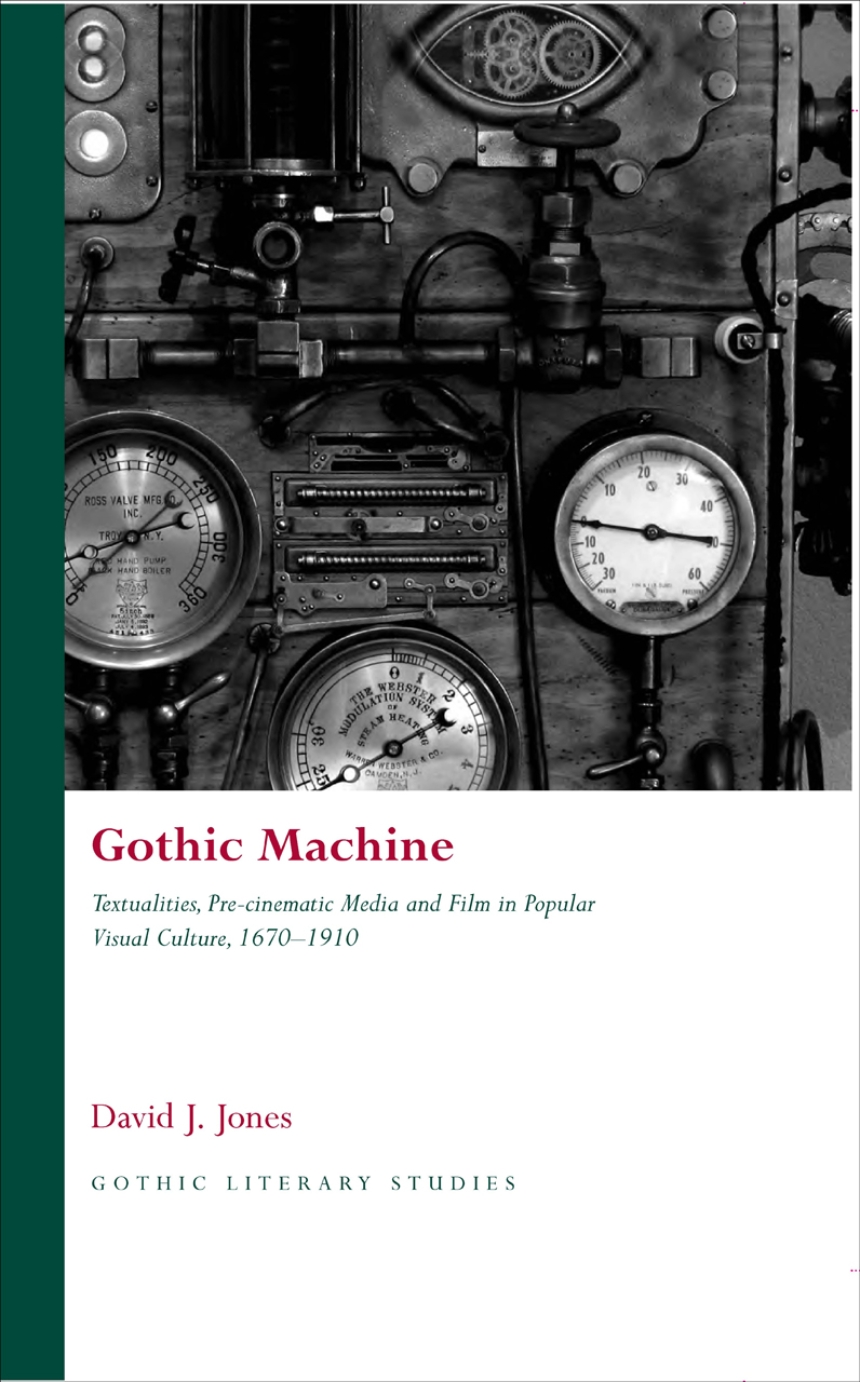Gothic Machine
Textualities, Pre-cinematic Media and Film in Popular Visual Culture 1670-1910
Distributed for University of Wales Press
Gothic Machine
Textualities, Pre-cinematic Media and Film in Popular Visual Culture 1670-1910
In Gothic Machine, David Jones reveals the intriguing relationships between Gothic literature, film, and the media existing prior to the advent of the cinema. Jones tracks the Gothic horror genre from its earliest days as literature, through phantasmagoria and the magic lantern shows of the Victorian period, to the early films of the 1890s, and finally to the first motion picture adaptation of Mary Shelley’s Frankenstein in 1910. Among the numerous personalities that appear in Jones’s study are the Marquis de Sade; Étienne-Gaspard Robert, or “Robertson”; Friedrich Schiller, and the Lumière brothers.
240 pages | 5 halftones | 5 1/2 x 8 1/2 | © 2011
Literature and Literary Criticism: General Criticism and Critical Theory
Reviews
Table of Contents
List of Illustrations
Introduction
1. Memento Mori, Griendel and the Forerunners, Schröpfer and Schiller: German Popular Visual Culture 1670–1800. Friedrich Schiller’s Der Geisterseher/The Ghost-Seer, Sturm und Drang and Magic-Lantern Shows
2. Matthew Lewis’s The Monk, the Marquis de Sade and Inter-Medial Influence: The Publishers, Readership, Visual Spectacle and the Staging of the Gothic 1790–1830
3. Etienne-Gaspard Robertson’s Gothic Fantasmagorie and E. T. A. Hoffmann
4. Gothic Renewal and Bifurcation: Sheridan Le Fanu, Edward Bulwer-Lytton’s The Strange Tales, Charles Dickens, Pepper’s Ghost and Etienne-Jules Marey. The Daguerreotype and Diablerie in French Visual Media
5. ‘In or around the Winter, 1895”: From the Prelude to Cinema Proper. French Gothic Symbolism, Villiers de L’Isle-Adam, J.-K. Huysmans, the féeries of Georges Méliès and Alice Guy Blanché’s Esmeralda
6. ‘Another Kind of Showman’: Robert Louis Stevenson, Bram Stoker, Robert Paul, Albert Smith and Film’s First Frankenstein. Anglo-American Gothic in the Age of the First Films 1895–1910
7. Conclusion: French Extremity
Notes
Bibliography
Index

